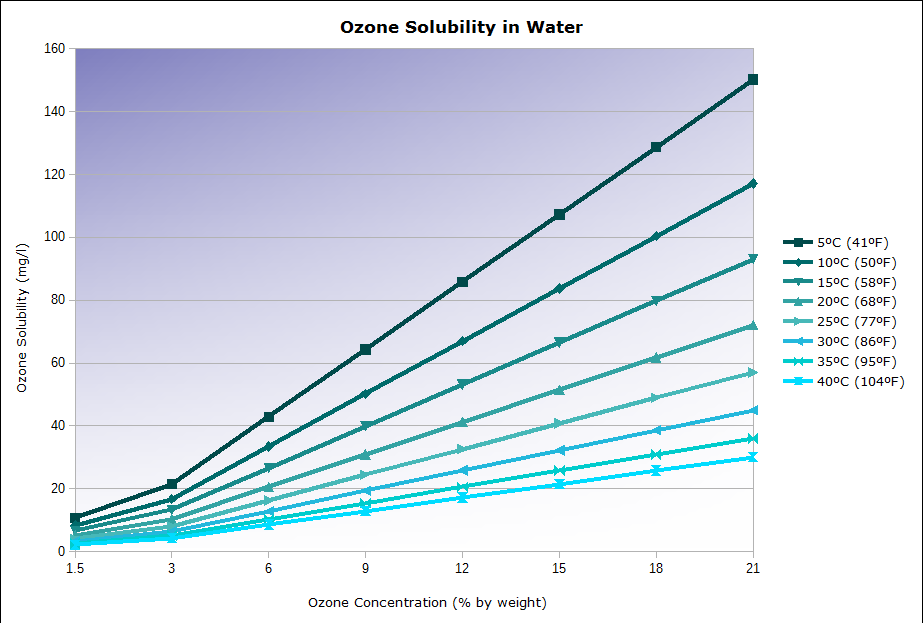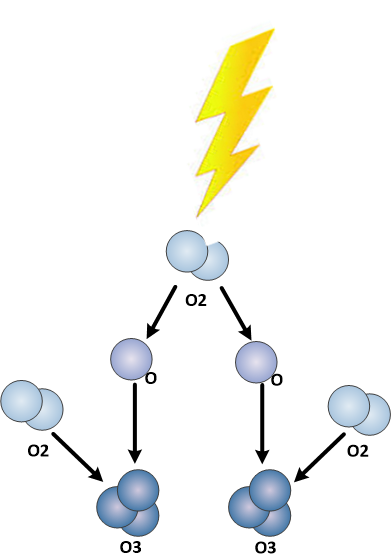Ozone Solubility in water
Ozone is used in many water treatment and disinfection applications that require ozone to be dissolved into water. However, is ozone is generated as a gas and therefore some action must take place to dissolve this gas into water, or any other liquid. Ozone is only partially soluble into water, this section will cover ozone solubility and what to consider when dissolving ozone into water. Incorrect application can result in loss of ozone, which you can read here.

Ozone Solubility Rate:
Ozone solubility is greatly dependent upon the saturation ratio for your application. The solubility of ozone or saturation ratio will be dependent upon the temperature of your water, the concentration of ozone gas, and water/ozone pressure. See the charts below for a few examples.
This chart shows the solubility of ozone into water based on temperature and ozone concentration. As temperature decreases, ozone solubility increases. As ozone concentration increases, ozone solubility also increases.

This chart shows the affect water/ozone pressure has on ozone solubility into water. As pressure increases, ozone solubility also increases.
The solubility rate of ozone gas into a liquid is an important consideration and must be considered. For example, if your goal is to create an aqueous ozone solution with 5 ppm ozone but due to water temperature, pressure, and ozone concentration the theoretical saturation rate is 4.5 ppm there is no amount of ozone in grams per hour or pounds per day that would achieve 5 ppm of ozone into water. On the contrary, if the saturation rate is 4.5 ppm and your target dissolved ozone level is 0.5 ppm, this efficiency of your system may be quite good. Review the saturation rate of your application carefully. Learn more about the fundamentals of ozone solubility into water HERE.
Ozone Mass Transfer Equipment:
Ozone gas must be dissolved into liquid using mechanical means. This equipment can be referred to as the mass transfer equipment. Commonly the rate of ozone gas that is transferred into liquid and becomes dissolved vs the ozone gas that is wasted or off-gassed is referred to as the mass transfer ratio. This equipment can vary, a few examples are outlined below:
Bubble Diffuser:
Bubble Diffusers are simple aerator stones similar to what you may find in the bottom of a fish aquarium. Ozone gas bubbled into water with a diffuser can transfer into water using this method as it naturally rises through the water. This is a simple method requiring very little energy, and few mechanical parts. However, this is typically the least efficient method to dissolve ozone into water. Bubble diffuser info can be found HERE
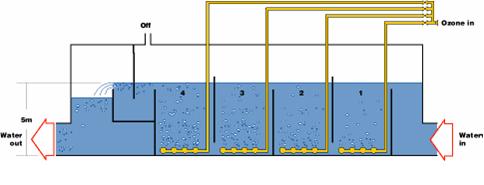
Venturi Injector:
Venturi Injectors use a pressure differential in a pipeline across an orifice with a suction port to pull ozone gas into the liquid under a vacuum. This method dissolves ozone gas into water rapidly and efficiently but does require a pump and excess pressure for operation. Venturi injector info can be found HERE.
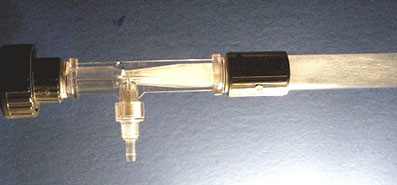
Static Mixer:
Static Mixers may also be referred to as Pipeline mixers, flash reactors may be a pipeline serpentine, or other pipeline mixers.
Ozone gas can be dissolved into pressurized, flowing water via a simple static mixer. Pressurized Ozone gas can flow into a water stream using a TEE provided the ozone gas pressure is greater than the water pressure. A downstream static mixer can then be used to thoroughly mix the ozone gas into the water. Static Mixer info can be found HERE.
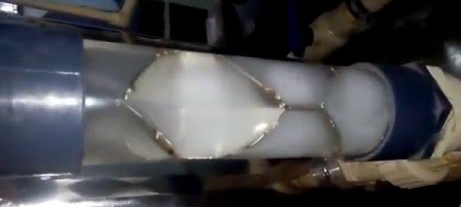
Additional Information Links:
Ozone Dosage vs Dissolved Ozone
Dissolve Ozone into water with Bubble Diffuser
Dissolve Ozone into water with Venturi Injector
Dissolve ozone into water with Static Mixer
Compare Venturi Injector and Bubble Diffusers
How to read an Injector Performance Chart
Additional Ozone Solubility Information


